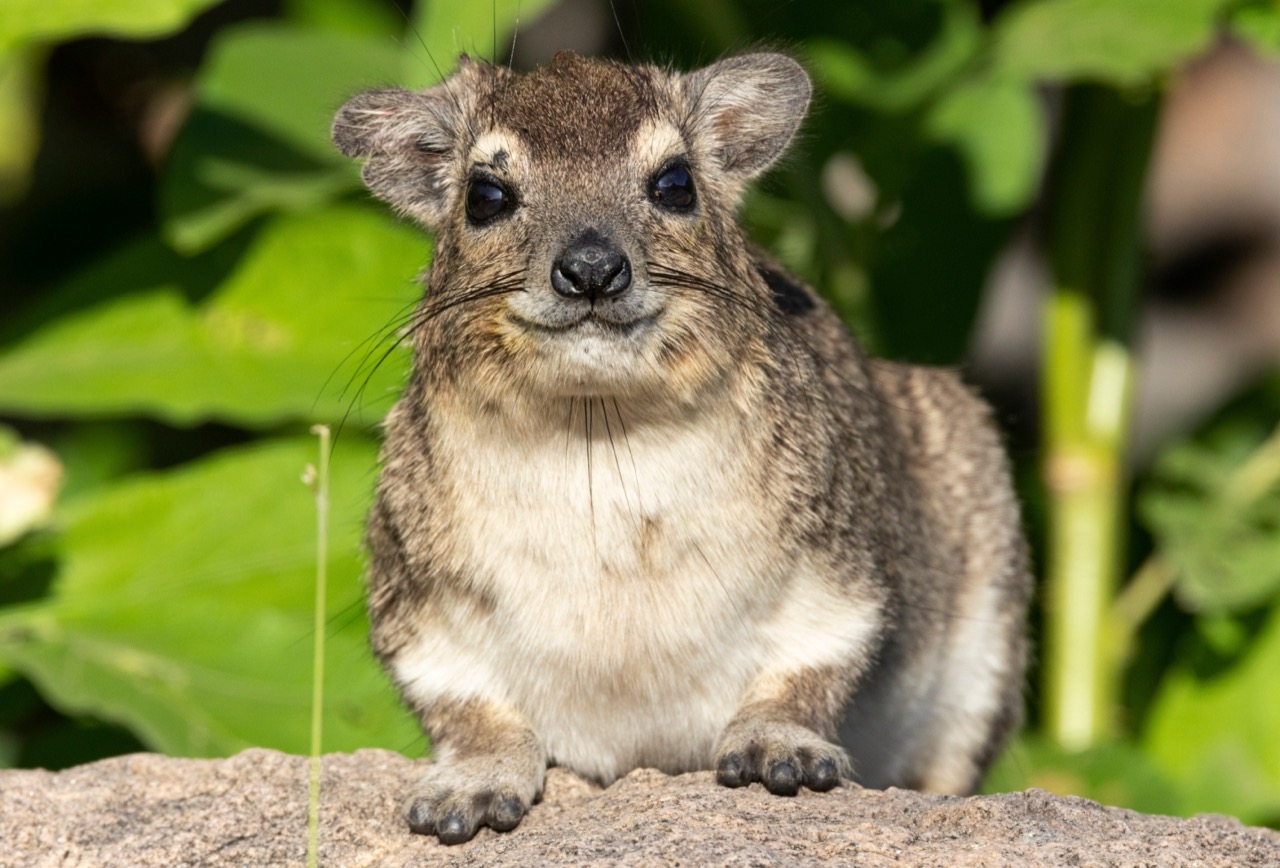The rock hyrax, a small yet fascinating creature, might deceive the untrained eye with its rodent-like appearance, but a deeper look reveals a complex and captivating animal full of surprises. This small mammal, scientifically known as Procavia capensis, boasts a range of unique characteristics that not only differentiate it from rodents but also connect it to some of the largest animals on earth. Let’s delve into the life of the rock hyrax and uncover the secrets it holds.
**Characteristics / Physical Description**
The rock hyrax, typically about the size of a domestic cat, weighs between 2 to 5 kilograms. Its fur varies from light brown to gray, with a white patch on its back that is especially prominent during the breeding season. Despite their small size, hyraxes have robust and rounded bodies, short tails, and a stumpy appearance. Their feet are peculiarly adapted for climbing steep rock surfaces, equipped with moist, rubbery pads that help in gripping.
**Taxonomy and Classification**
Interestingly, the rock hyrax is part of the order Hyracoidea and is closely related to elephants and manatees, sharing a common ancestor from about 50 million years ago. This surprising genetic relationship is evidenced by several physiological traits, such as similar skull structures and tusk-like incisors.
**Behavior and Social Structure**
Rock hyraxes are highly social animals, living in groups that can range from 5 to 50 individuals. These groups often consist of a dominant male, several females, and their young. They communicate through a series of 20 distinct vocalizations, which include trills, grunts, and even screams, to alert each other about predators or to strengthen social bonds.
**Habitat and Distribution**
Native to sub-Saharan Africa and parts of the Middle East, rock hyraxes predominantly inhabit rocky terrains and cliffs. These environments provide the necessary shelter and vantage points to survey for predators, which include eagles, leopards, and snakes.
**Diet and Feeding Habits**
Primarily herbivorous, the diet of the rock hyrax consists of leaves, fruits, berries, and bark, which they forage from their rocky habitats. Their digestive system is uniquely adapted to break down the fibrous plant material, featuring a complex, multi-chambered stomach to ferment the tough vegetation.
**Breeding and Reproduction**
Rock hyraxes have a gestation period of about seven months, one of the longest among similarly sized mammals. Females usually give birth to two to four young per litter. The offspring are precocial, born fully furred and with open eyes, starting to explore their surroundings within hours of birth.
**Relationship with Humans**
While not typically domesticated, rock hyraxes are sometimes hunted by local populations for their meat and fur. In some cultures, they are also featured in traditional medicine and folklore. However, they are not considered a threat to humans and generally maintain a safe distance.
**Evolutionary History**
The evolutionary history of the rock hyrax is as intriguing as its biological oddities. Fossil records suggest that their ancestors were once the size of small horses. Over millions of years, environmental changes and evolutionary pressures have sculpted them into the small creatures we see today.
**Use as Research Animals**
In scientific contexts, rock hyraxes have been studied for their peculiar resistance to certain toxins and their unique physiological traits. This research helps biologists understand more about evolutionary biology and the adaptive mechanisms of mammals.
Ending on a positive note, the rock hyrax continues to thrive in its natural habitat, despite the challenges posed by environmental changes and human expansion. Their ability to adapt and their intricate social structures make them a subject of ongoing fascination and study in the scientific community.
#tags
[“rock hyrax”, “Procavia capensis”, “mammal”, “Madagascar wildlife”, “animal behavior”, “conservation”, “evolution”, “herbivorous diet”, “social structure”, “research animal”]

